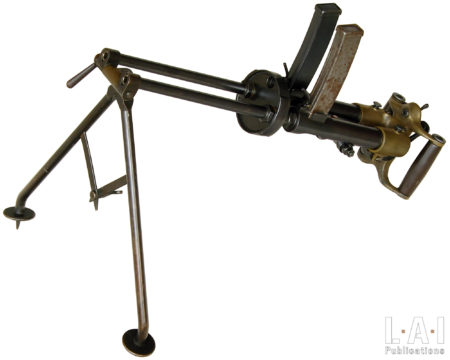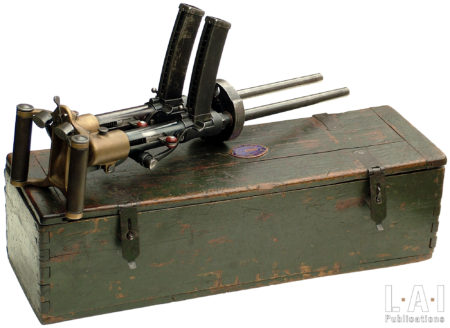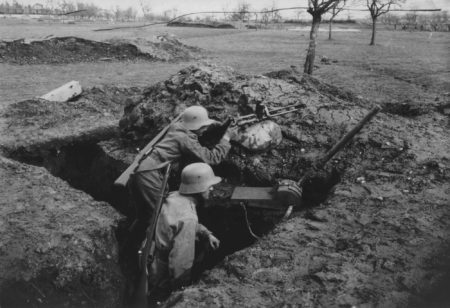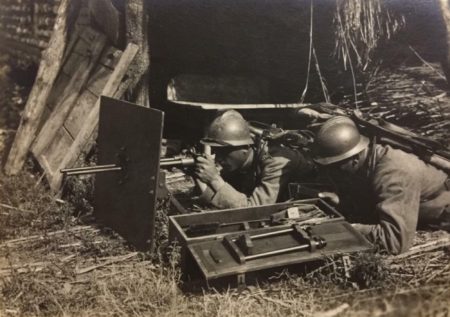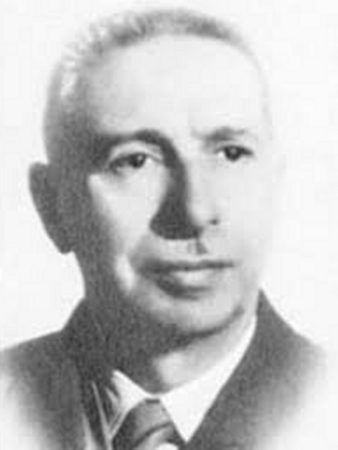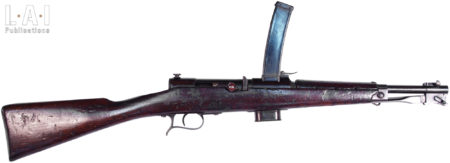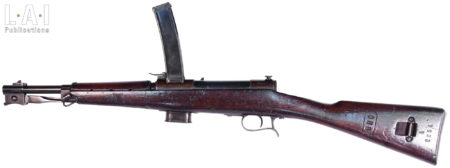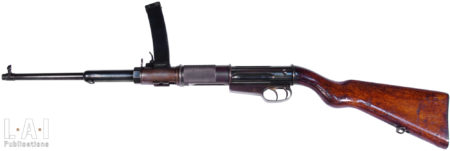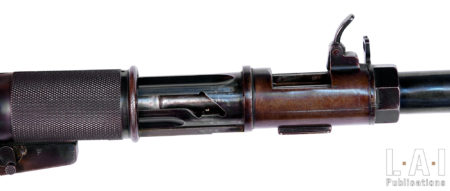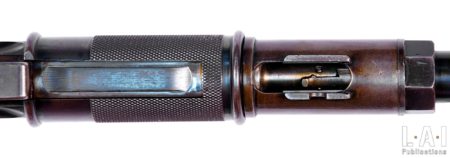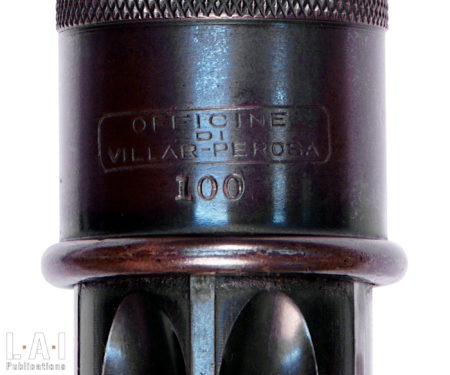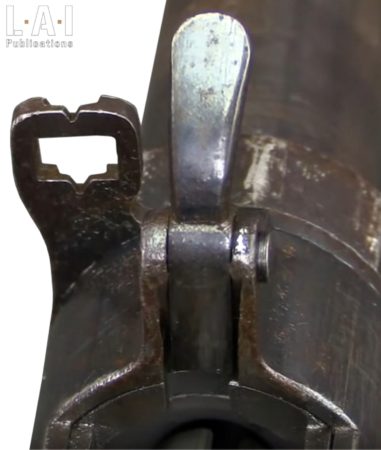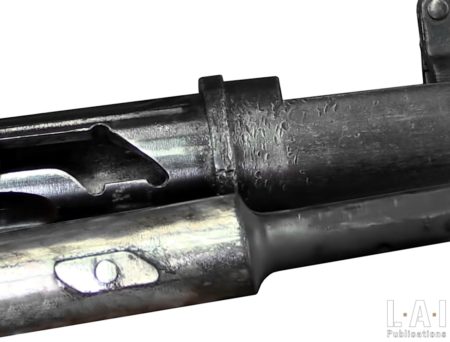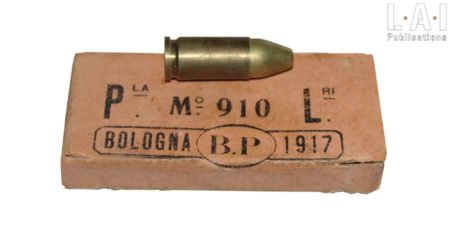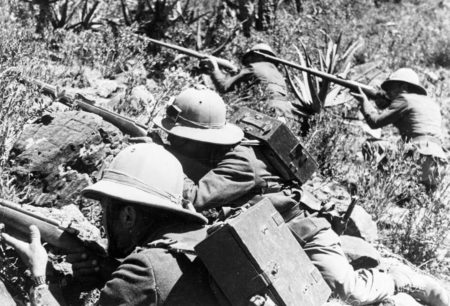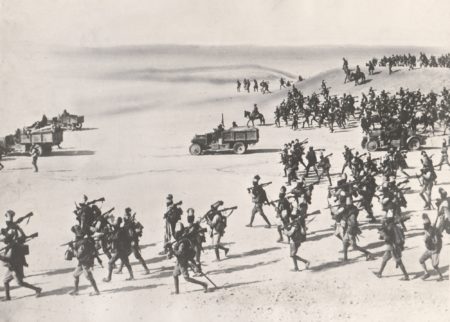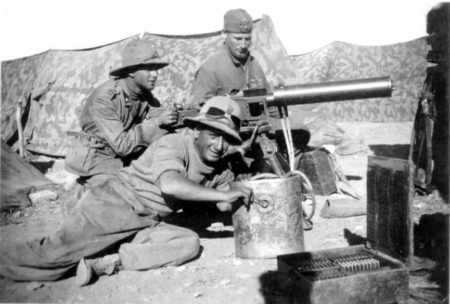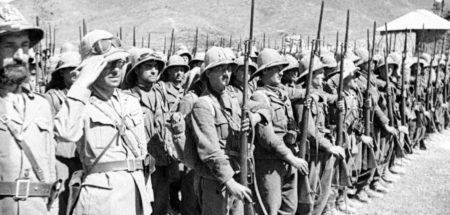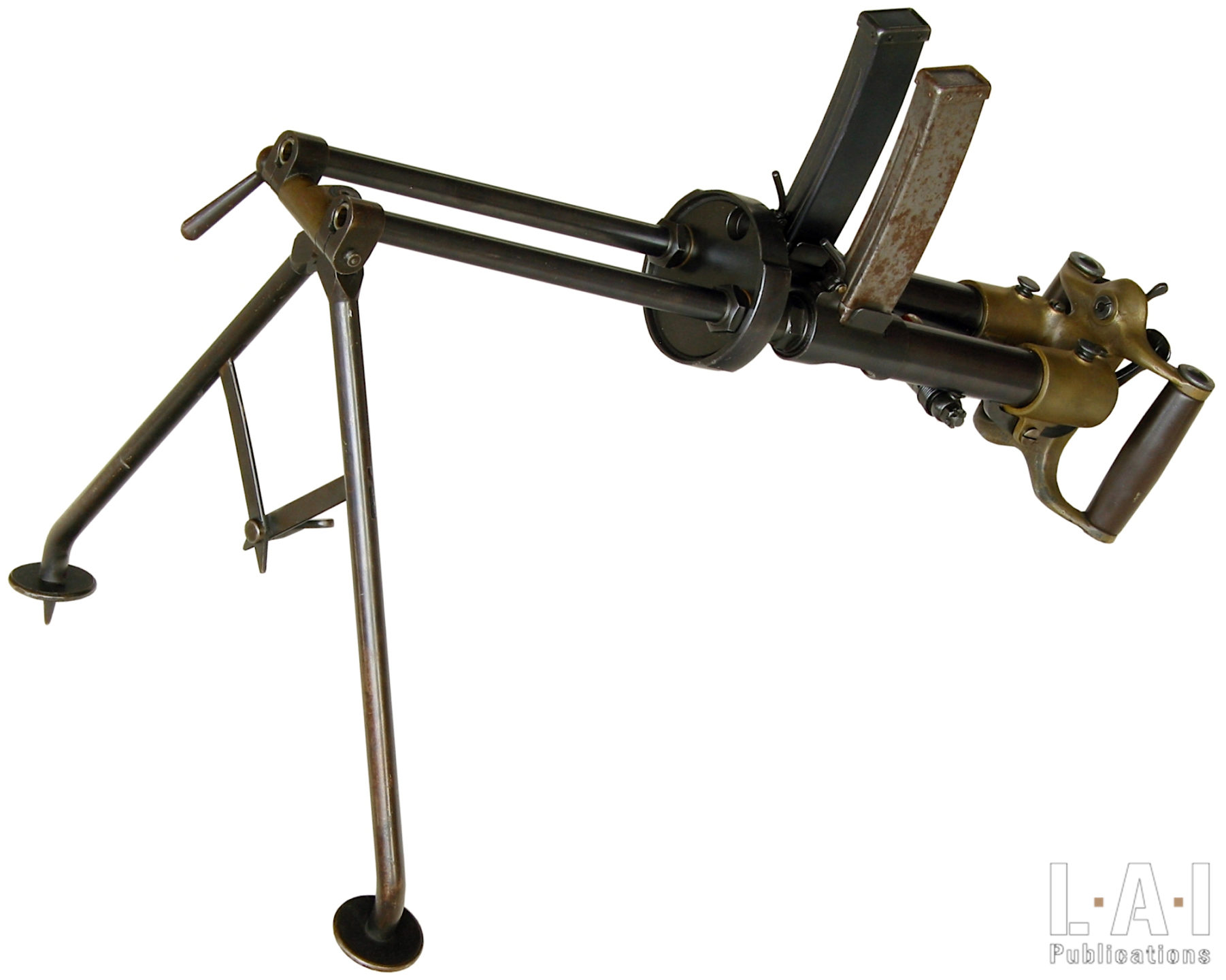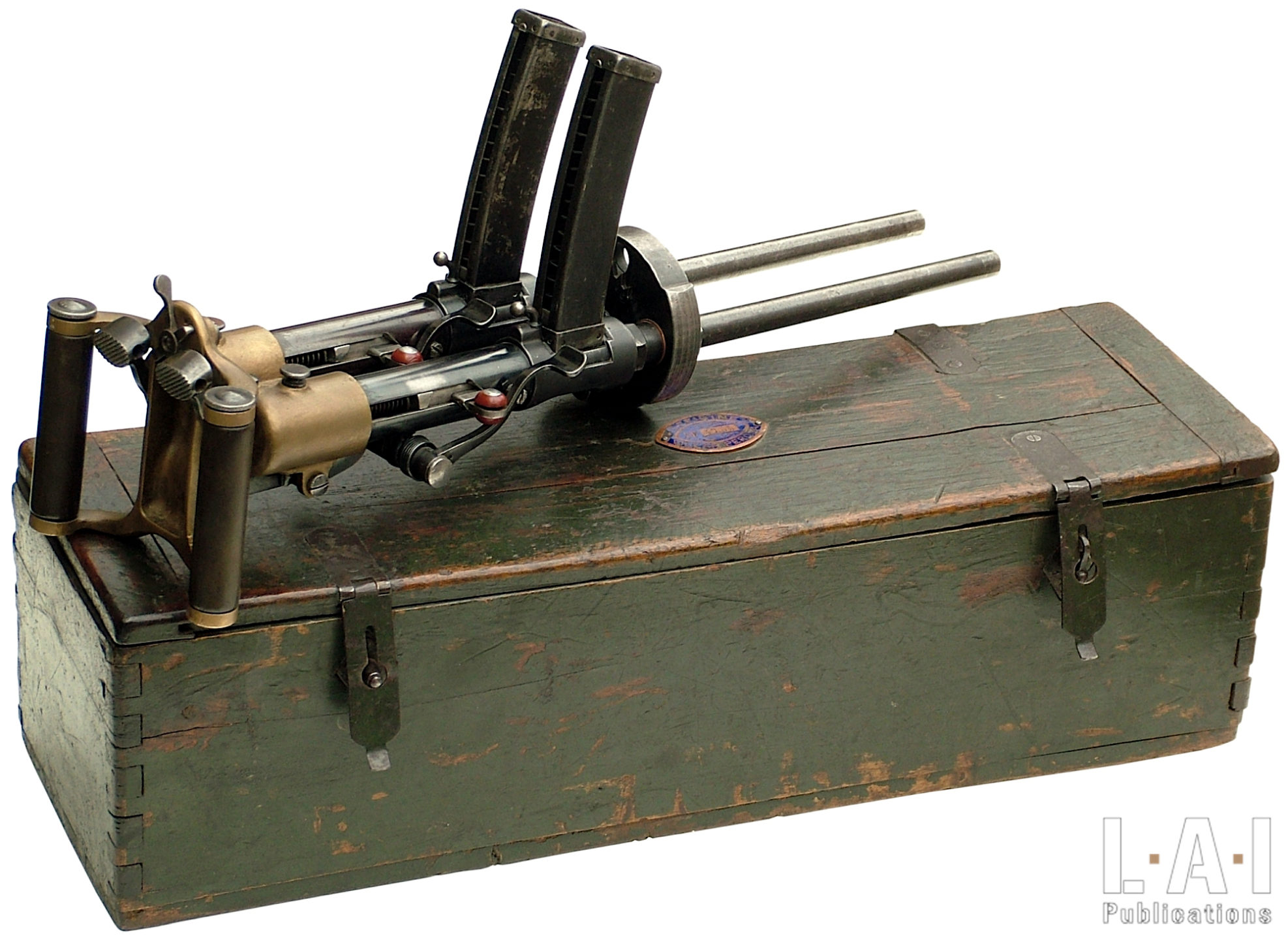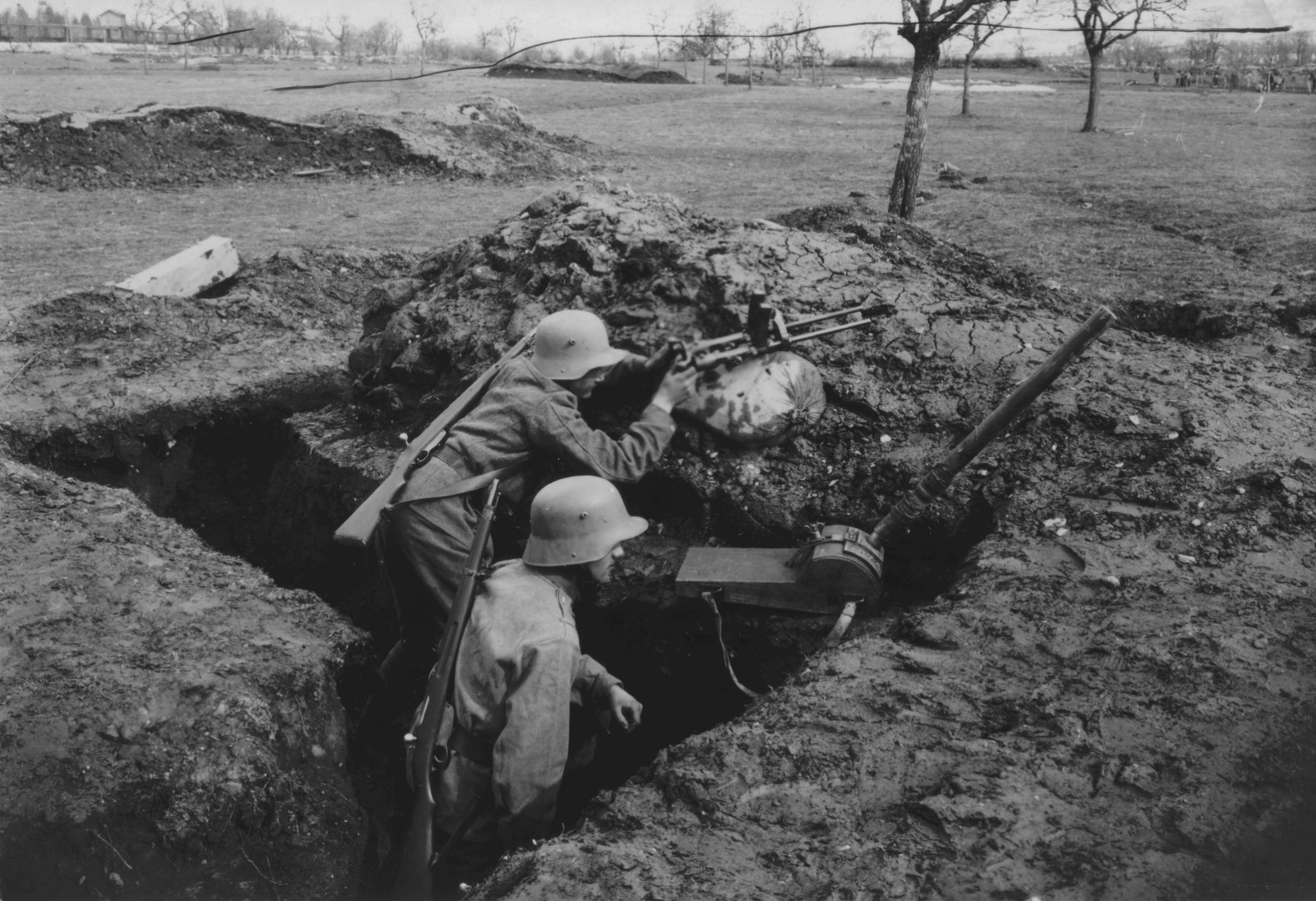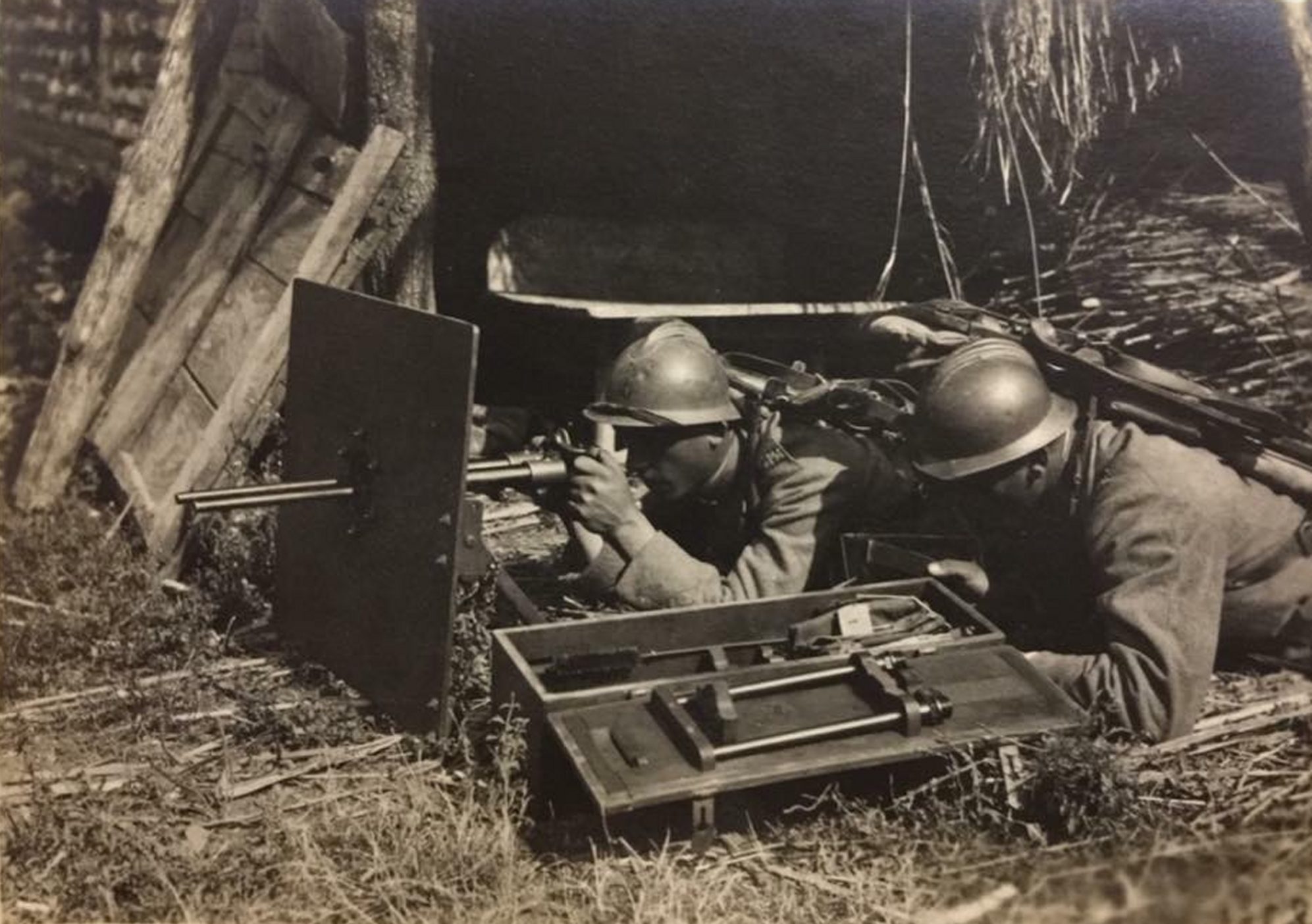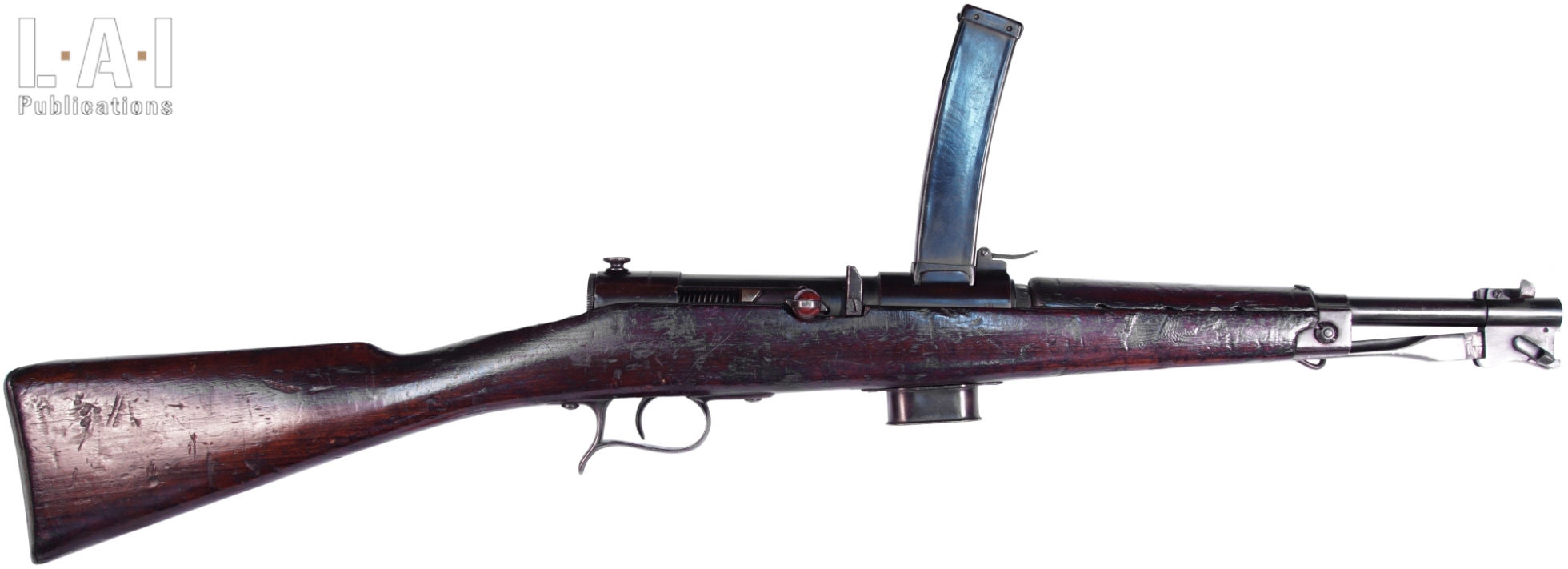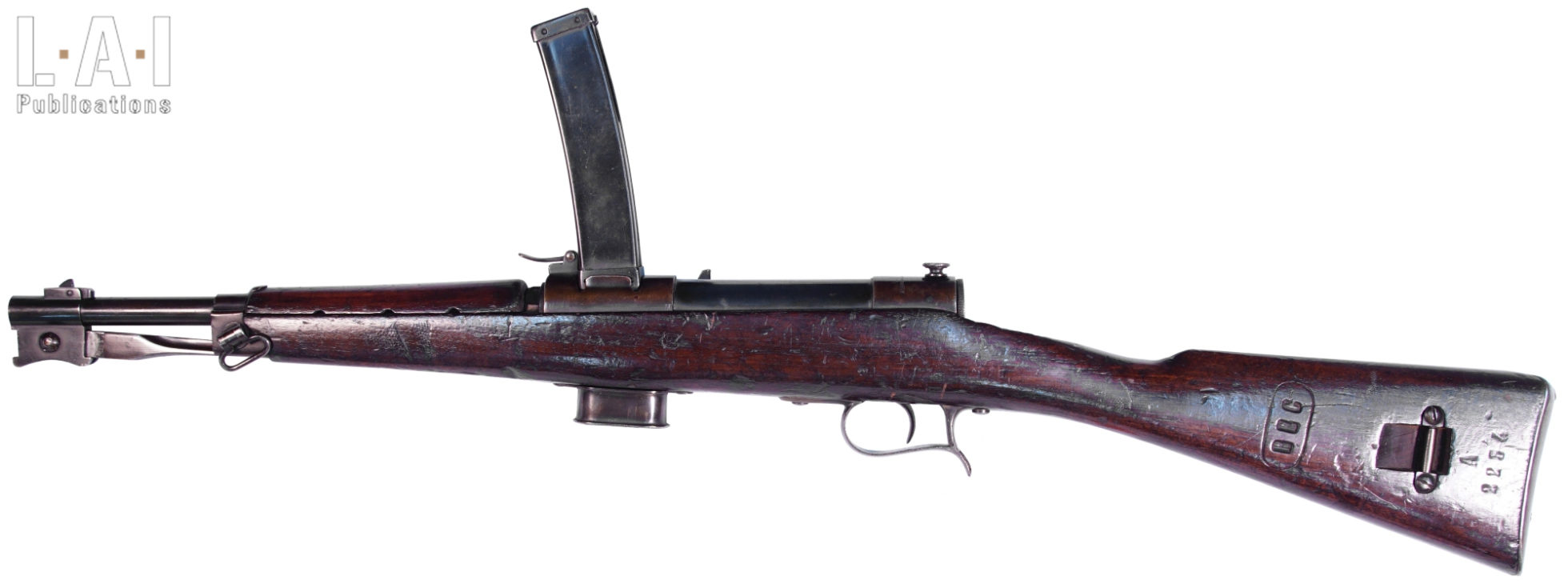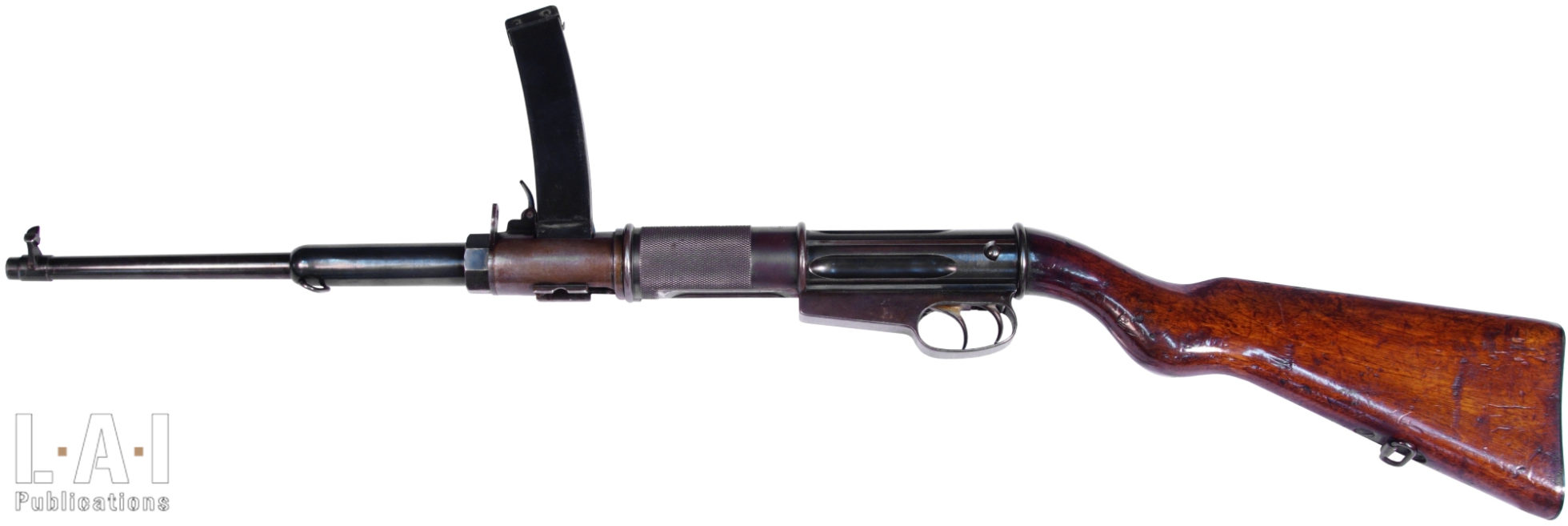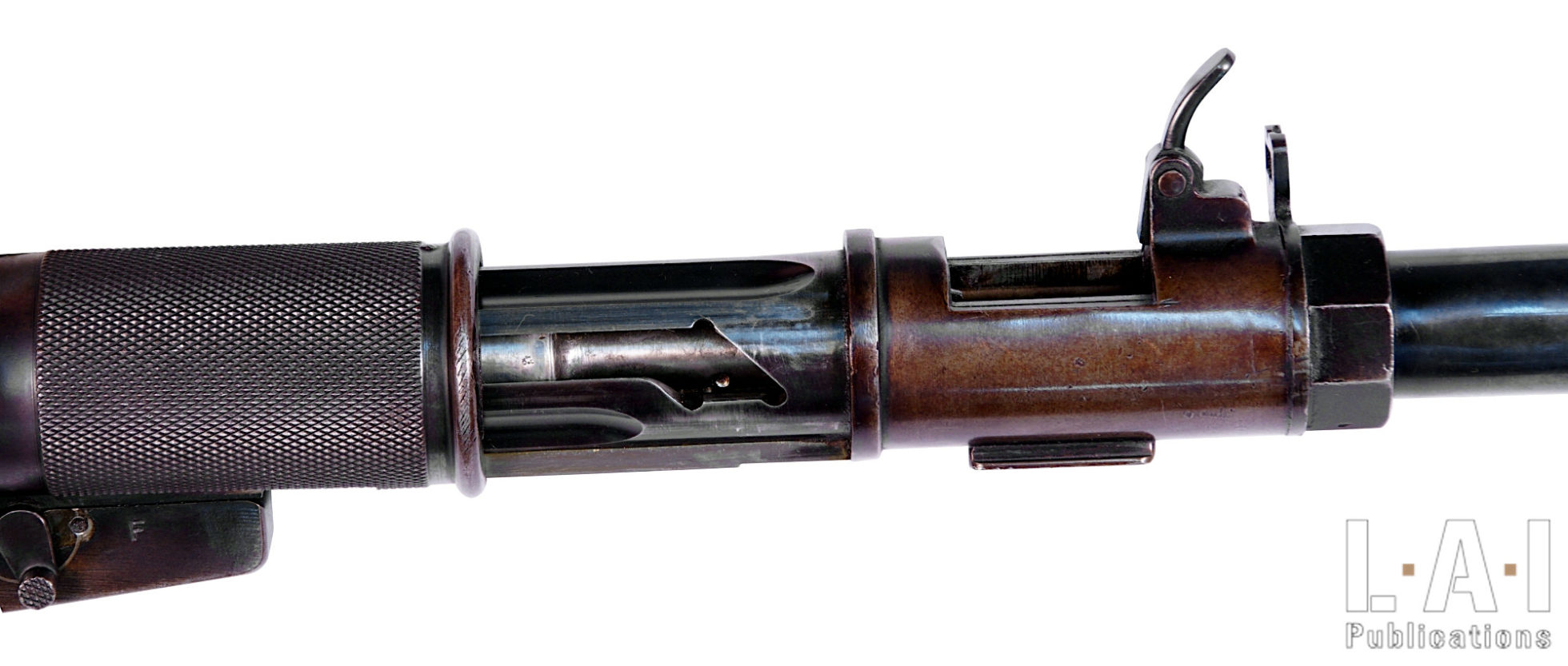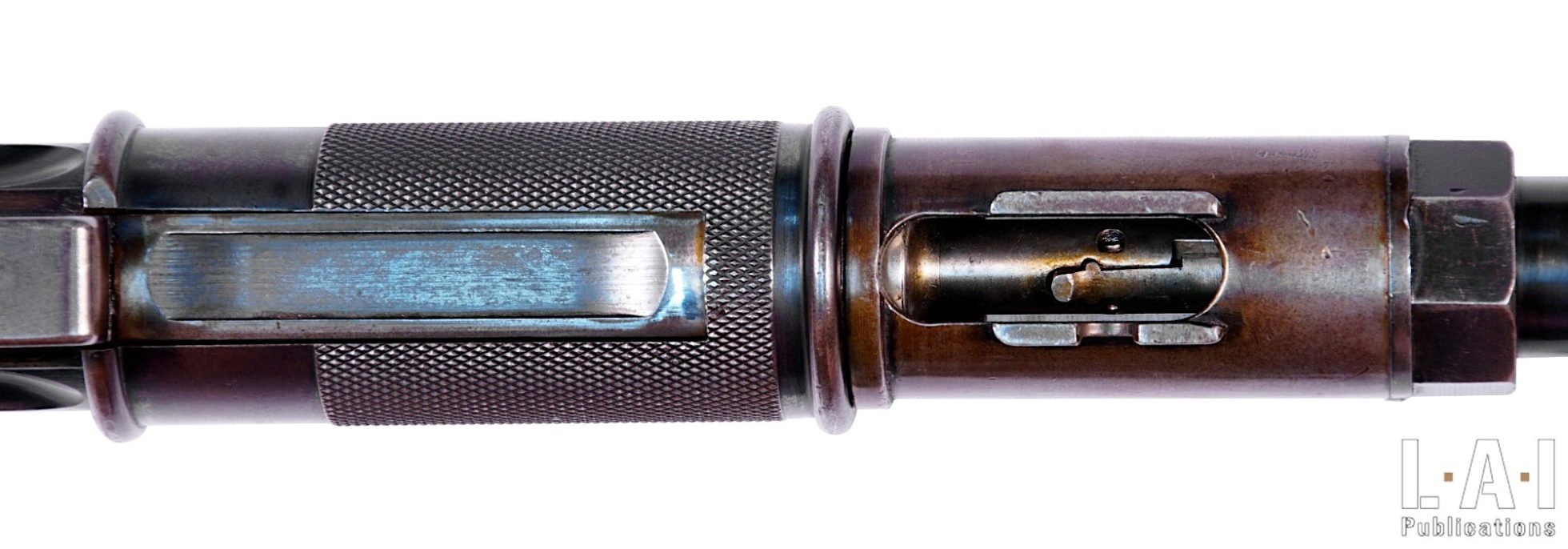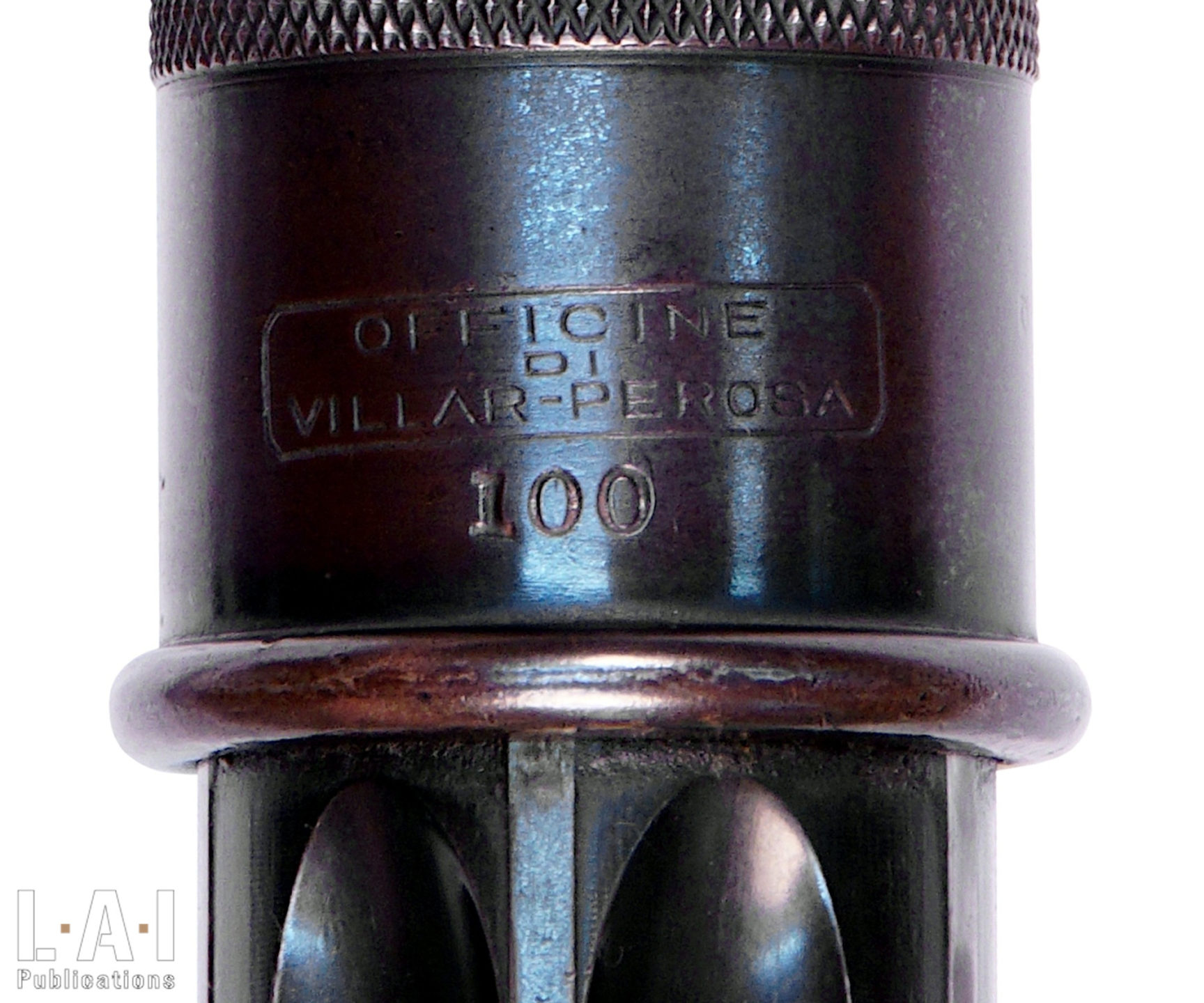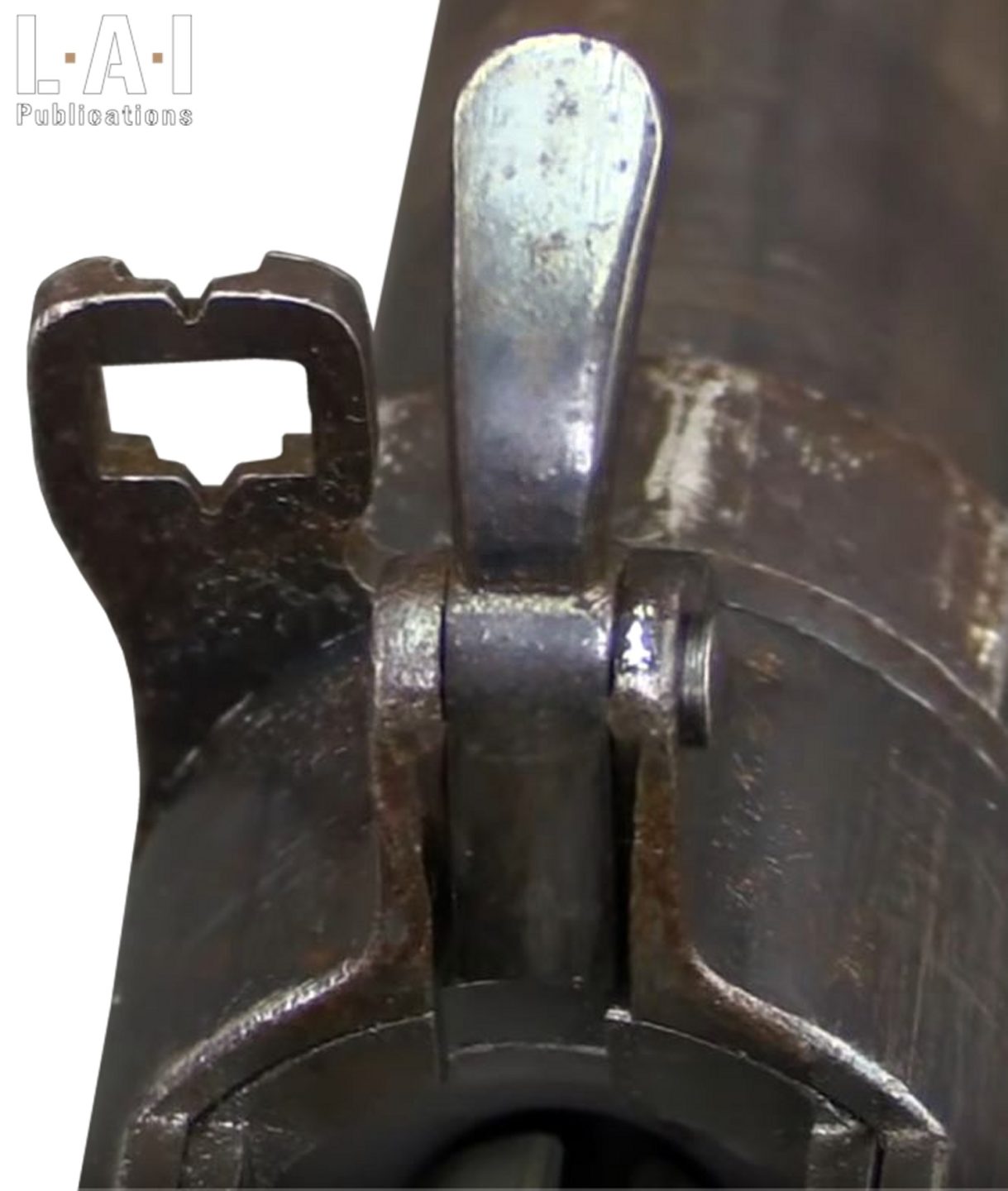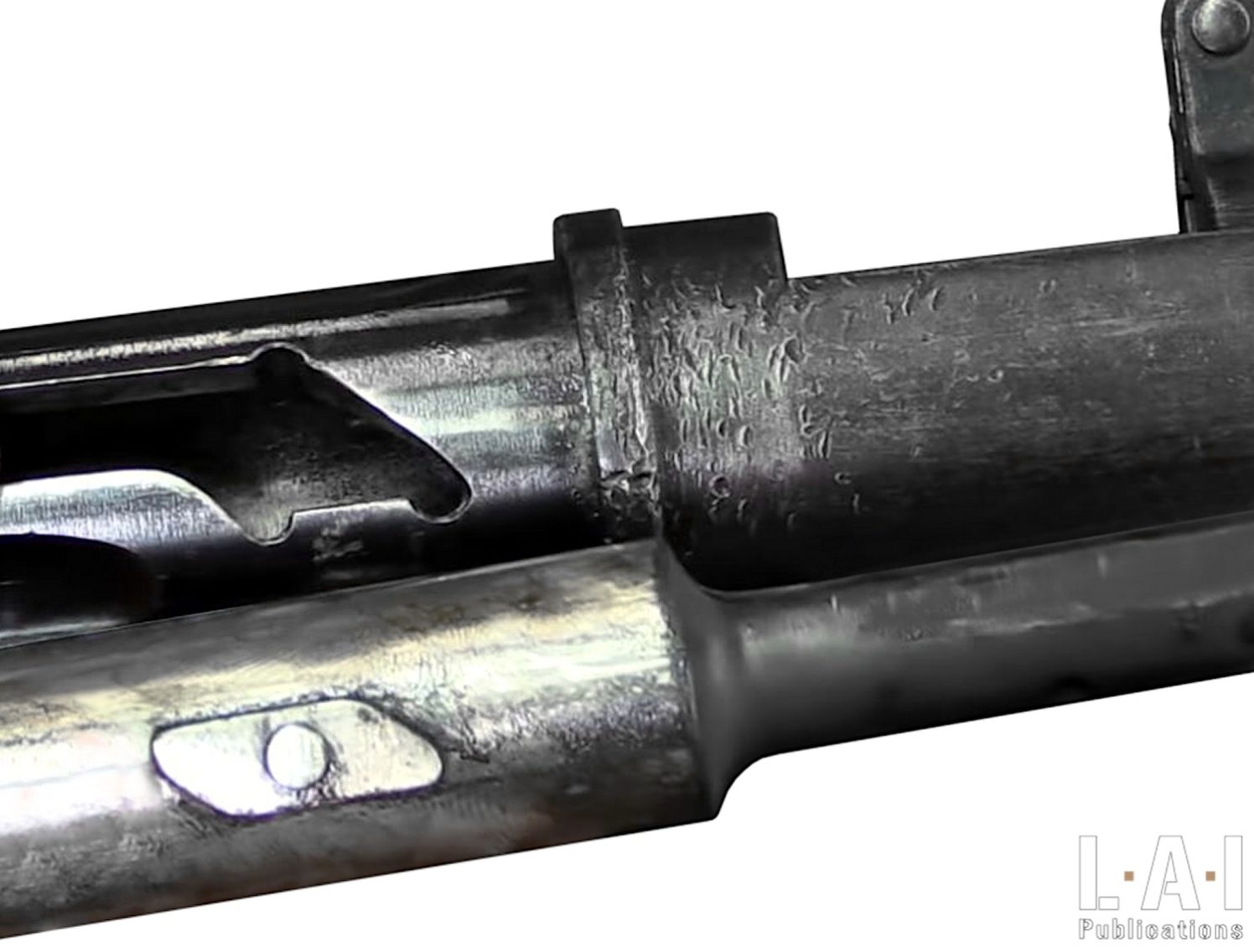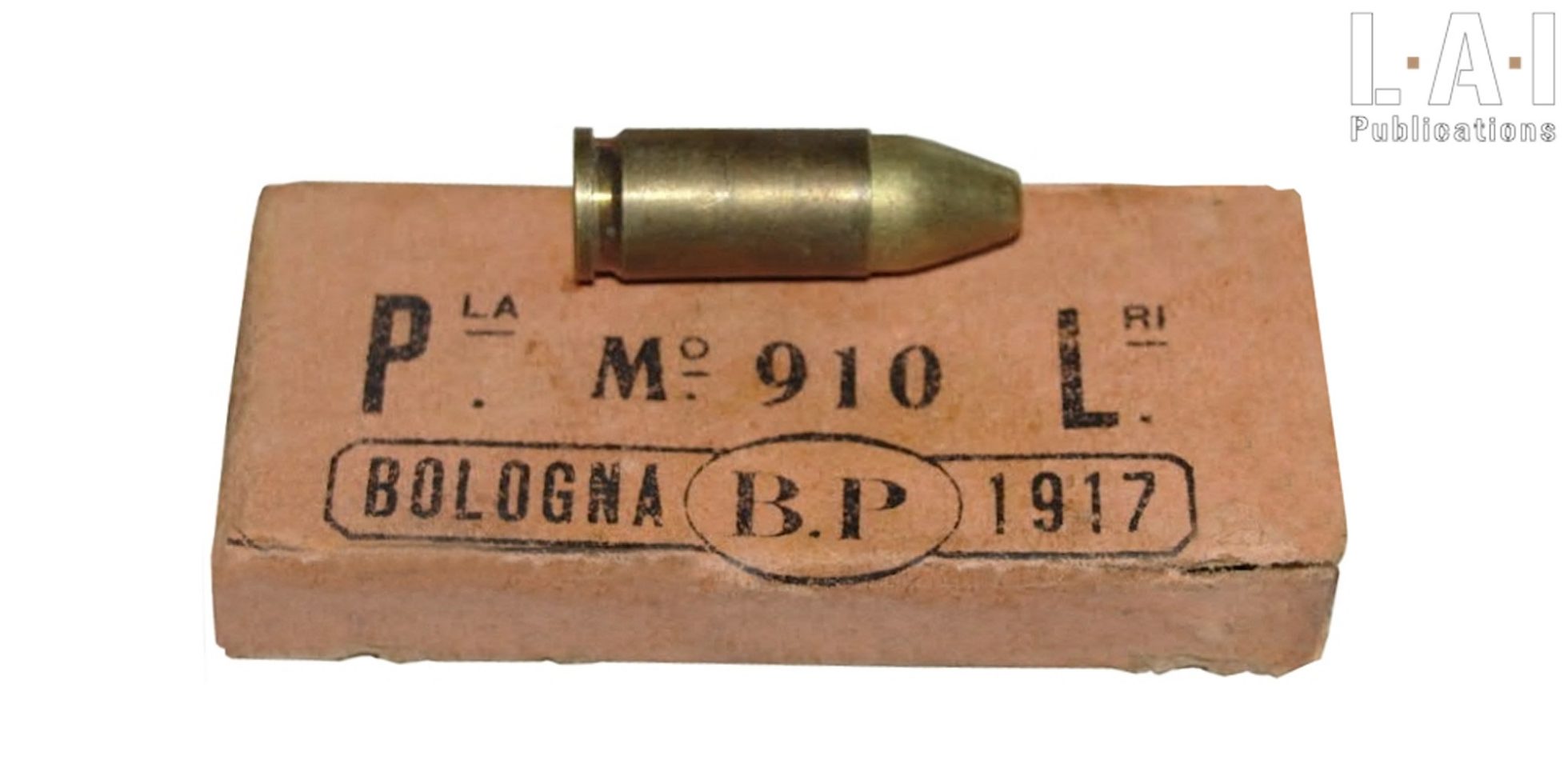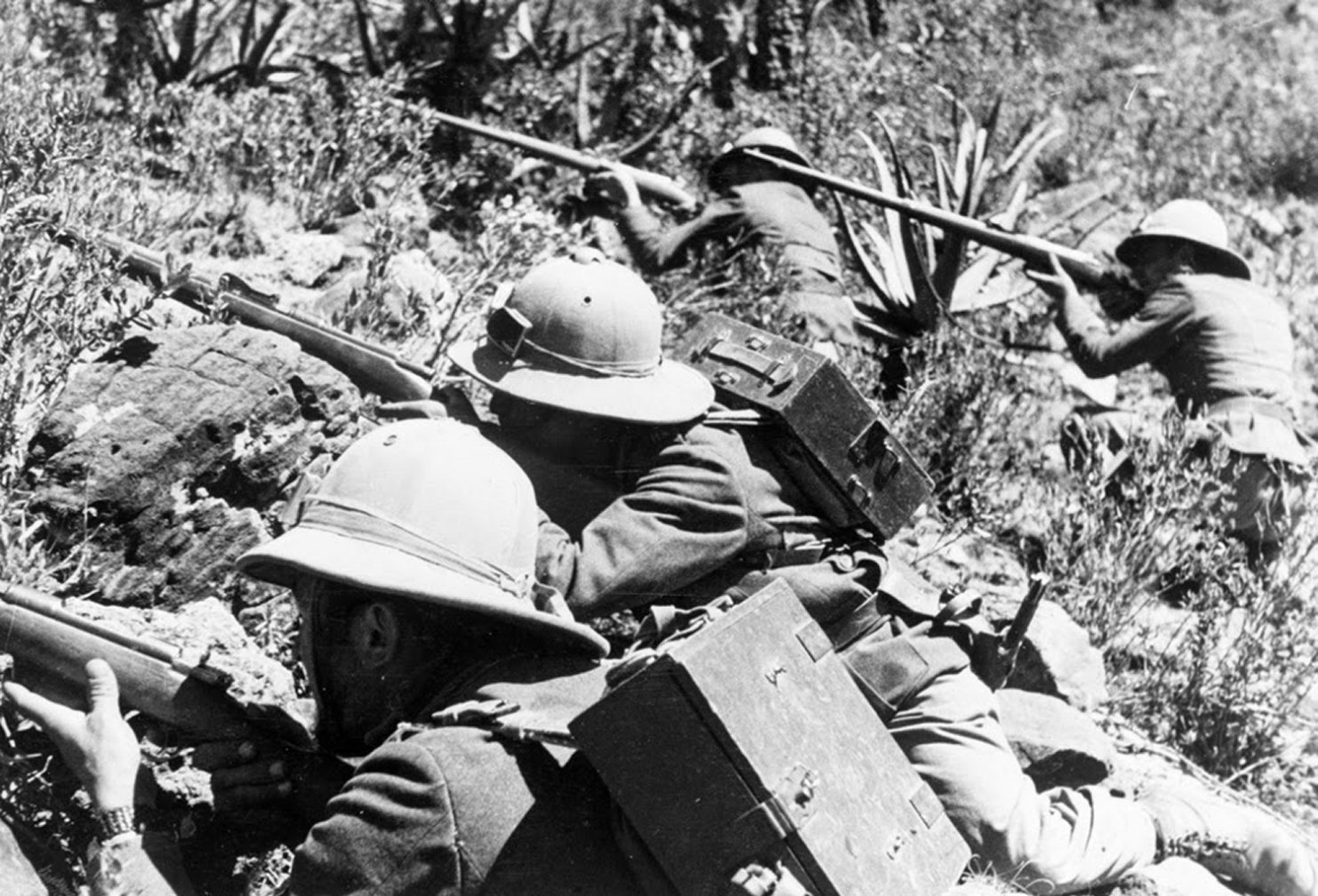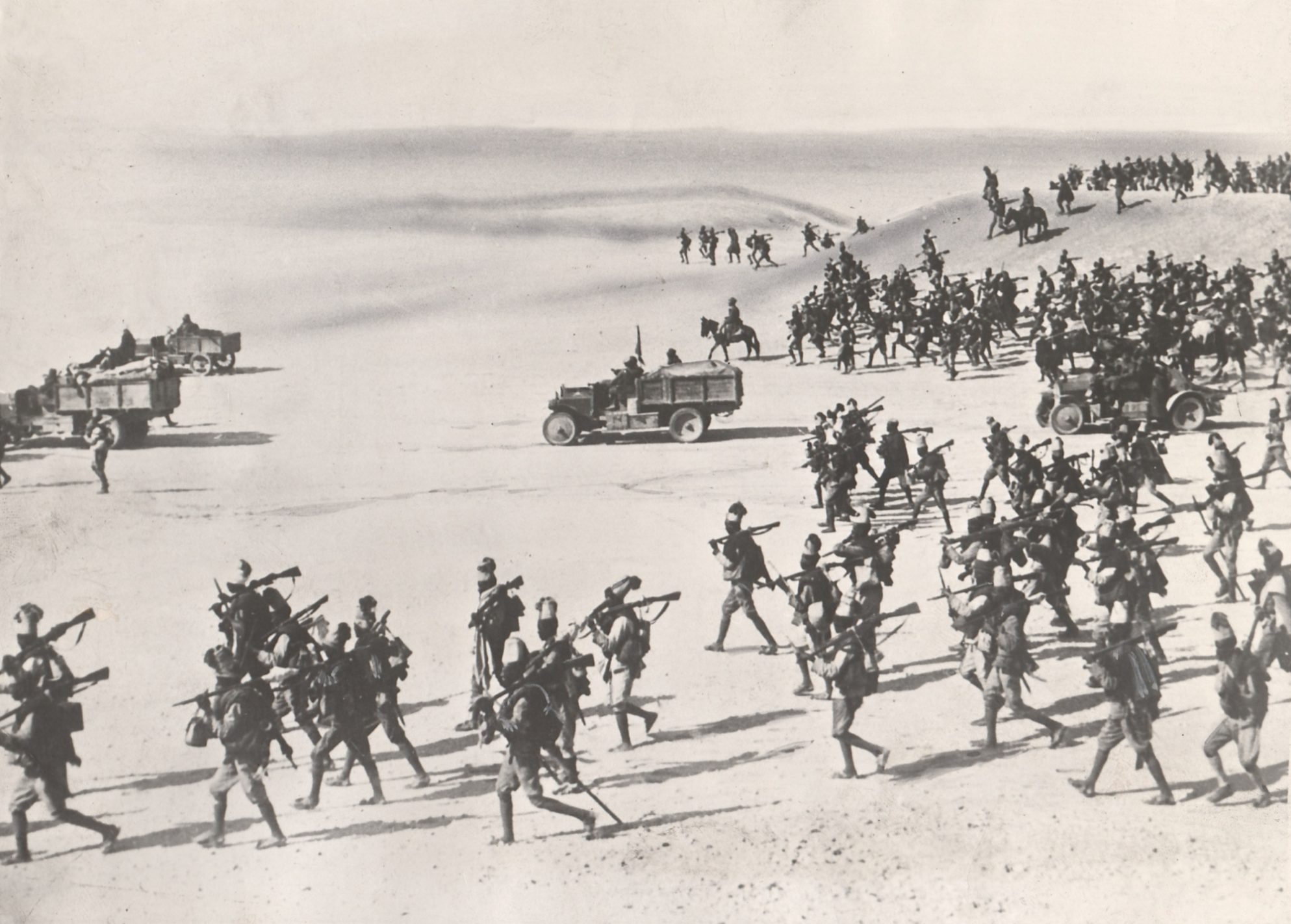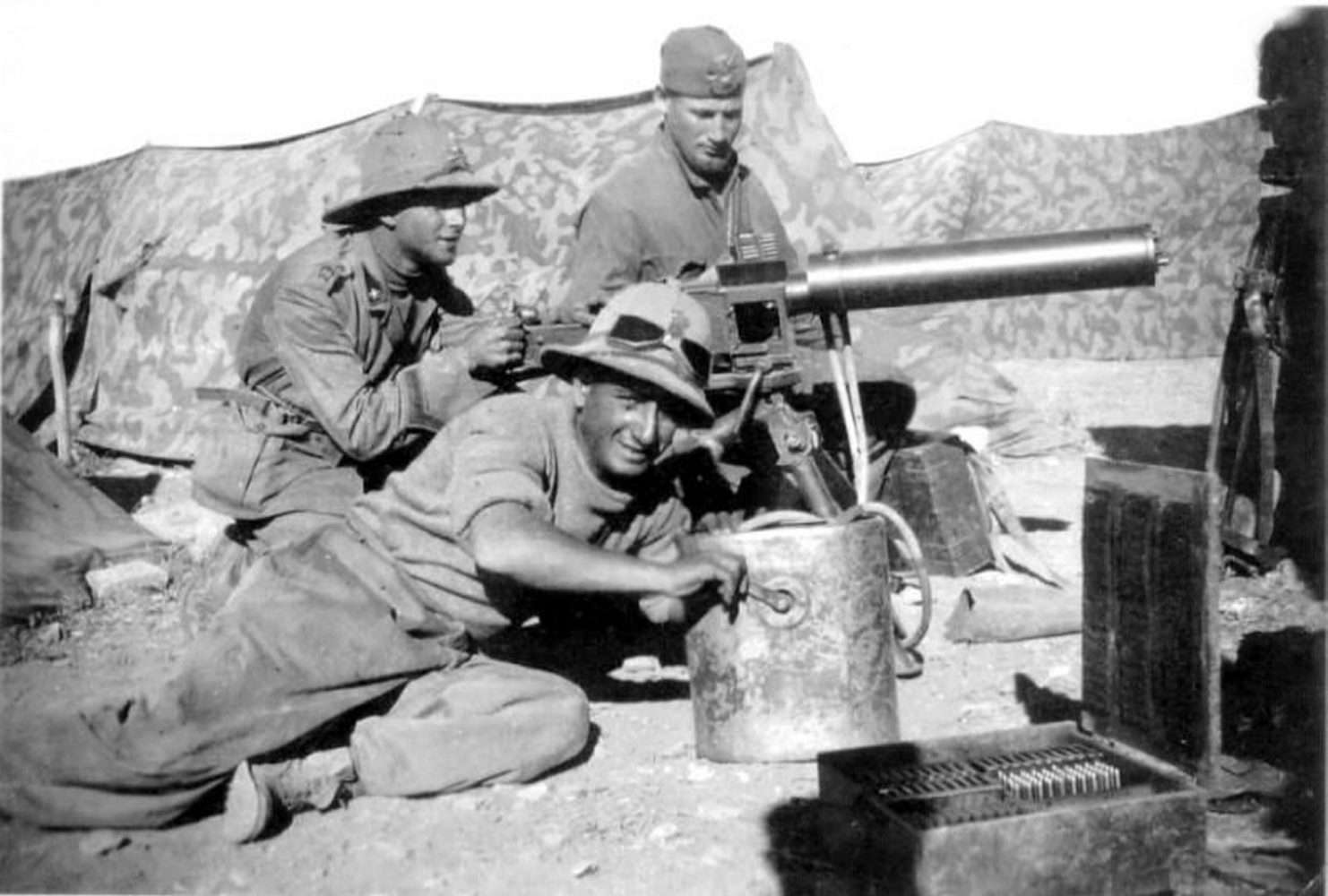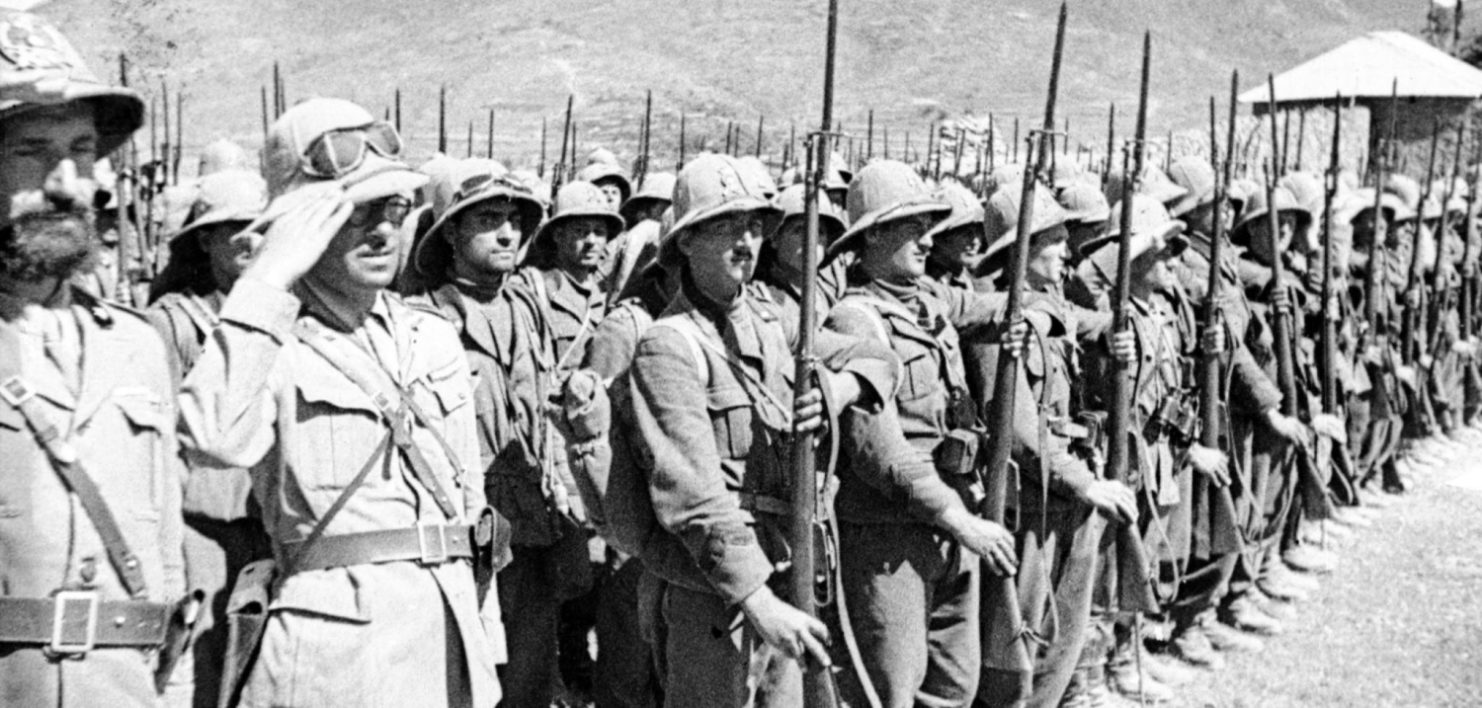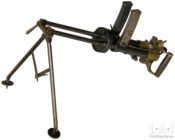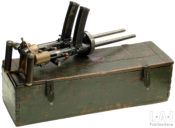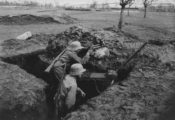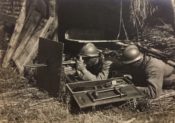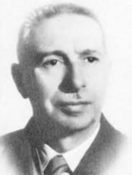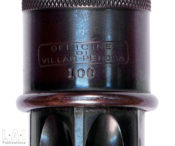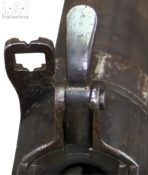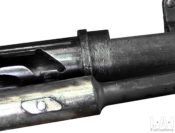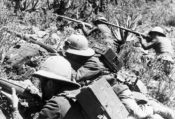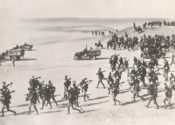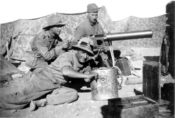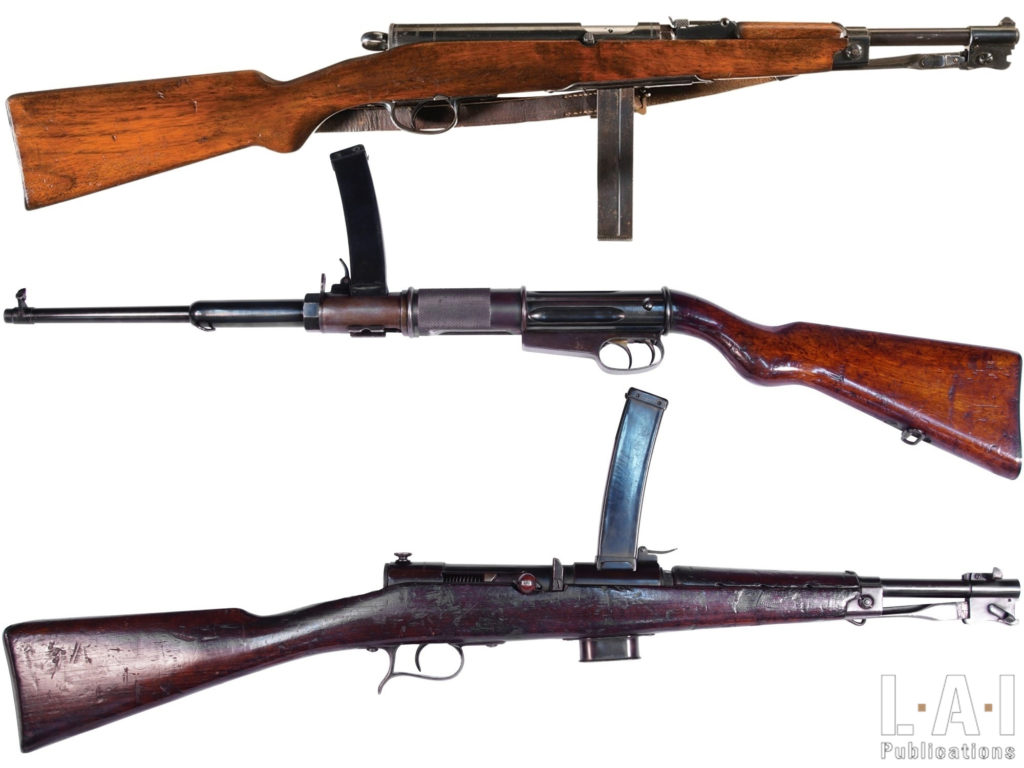
Since the double-barreled Villar Perosa did not prove successful in the infantry role, numerous pieces remained unused in the depots. Of course, that was a waste of resources, and so in 1917 three companies got down to work to transform them into suitable weapons.
The Pistola Mitragliatrice Mod. 1915
The Villar Perosa, made of two independent weapons coupled together, each with its own barrel, firing mechanism and magazine, looks pretty bizarre from today’s perspective. But at the time of its creation no one suspected that it would even count among the forerunners of a new species of weapon, namely the submachine gunSubMachine Gun More. None other than the well-known Italian weapons designer Abiel Bethel Revelli di Beaumont developed this weapon in 1914 for the company Officine di Villar Perosa (OVP), which was then adopted in the following year by the Regia Aeronautica officially as the Pistola Mitragliatrice Mod 1915. Their more famous name derived from the location of their production site, the municipality of Villar Perosa near Turin. Originally designed as a sidearm for airplanes, it did not reveal effective in this role. The used pistol ammunition in caliber 9 x 19 mm Glisenti offered an inadequate range for air combat and showed too little effect on the target. In addition, the rate of fire was much too high at 1,200 to 1,500 rounds per minute. A quick pull of the trigger and the whole magazine emptied in barely one and a half seconds. As early as 1916, the air force handed over its stocks to the army, where the weapon, often provided with protective steel shields, was initially used as a defensive weapon like a light machine gun.
The Villar Perosa has a pair of spade-style grips with thumb triggers that allow the gunner to fire the barrels independently. This leaves time to change the magazine of the other barrel. If not enough filled magazines were on hand, the floorplate of the inserted magazine could be opened to drop in the cartridges. A time-consuming task in the middle of a fight. The mechanism is the usual one of blowback bolt and recoil spring and fires from an open bolt. But the bolt is controlled by a milled-out track in the receiver body that causes the bolt to rotate 45 degrees as it closes. This last device is intended to act as a delayed blowback pattern, as part of the bolt’s recoil is transmitted to the receiver before it can keep on recoiling. Connected to that, the striker carries a lug bearing both on the receiver track as on a cam face on the bolt, so that the firing pin, driven by the recoil spring, cannot go forward to fire the cartridge until the bolt has rotated. The noise caused by the extremely high rate of fire earned the weapon the nickname “pernacchia” (“blowing a raspberry” in Italian).
However, it soon became apparent that the range, penetration, and accuracy of the Villar Perosa were also insufficient for use by ground forces. One soldier was constantly busy with changing and filling the 25 round magazines. There was neither a shoulder stock nor a practicable pistol grip, so the guns were mounted on bi- and tripods or ring mounts incorporated in protective shields. Due to its weight of 6.5 kg (14.33 lb), the Villar Perosa was sometimes used with a special frame that fixed it in front of the chest of the gunner. That way it was used by stormtroopers from 1917 in the mountain warfare. Also, a special bracket was tested as a swivel mount for the handlebars of the troop bicycles.
The separation
The Villar Perosa could sometimes intervene effectively in the action, but overall, successes were limited. And so, the weapons gradually went to the depots. In order to do something useful, the Italian Military High Command requested a conversion of the Villar Perosas into more practical infantry weapons. For that purpose, in 1917, three companies got to work. Common to all conversions was the separation of each Villar Perosa into two single-barreled weapons. The receiver was embedded in a wooden stock, received a traditional trigger assembly and front and rear sights. The magazine feed from the top remained, as well as the caliber in 9 mm Glisenti.
One of the participating companies was Beretta, in whose service the weapons designer Tullio Marengoni took care of the conversion. He was to develop many famous pistols and submachine guns for Beretta in the following decades. In appearance, the result of his work resembles a carbine with a wooden stock and a folding spike-bayonet permanently fixed to the barrel. Internally it is identical to the Villar Perosa and still works as a delayed blowback weapon. The only major internal difference is the redesign of the trigger mechanism.
The design worked reliably and so the weapon stood out in the presentation to the Army Test Commission against the competitors from FIAT and Ansaldo Crocetti. The army thus decided its adoption as the Moschetto Automatico Beretta Mod 1918, or shortly MAB 18. In the following months, all available Villar Perosas were exploited and rebuilt at Beretta. The first and by far the most produced model was the “Monogrillo” (“one trigger”). It had no selective fire capability and fired exclusively in full-auto. Many components were taken from other Italian military weapons, such as the wooden stock and trigger guard of the Vetterli-Vitali 1870 rifle and the folding bayonet from the Carcano cavalry carbine. Later, a second model called “Bigrillo” (“two triggers”) was created with a two-trigger selective fire capability, as well as redesigned furniture. This model lacked the folding bayonet. According to Italian sources approximately 5,000 pieces of both types were manufactured. Some of them arrived at the front with the Arditi stormtroopers shortly before the end of the war. Many years after the war, Beretta acquired these weapons again. Beginning in 1930 many of them were converted to semi-automatic rifles with magazine feed from below for the Italian and Argentine police and adopted as the Moschetto Automatico Beretta Mod 1918/30 (MAB 18/30). This model fired from a closed bolt and the cocking operation was changed from a handle on the right side of the receiver to a retractable ring housed in the rear end of the receiver.
Also, the manufacturer of the Villar Perosa tried to get a piece of the cake by converting its original weapon in co-operation with the Fabbrica Italiana Automobili Torino (FIAT). Abiel Bethel Revelli got back to work. He used the Villar Perosa system almost unchanged, adding a fire selector lever to the receiver and a brass deflector underneath the stock. The rate of fire was 900 rounds per minute. The FIAT was trialed in 1917 and lost out against the Beretta Model 1918.
But Revelli did not give up that quickly and thoroughly revised his design. The result was officially called Moschetto Automatico Revelli (MAR), but today is mostly known only as the OVP (for Officini di Villar Perosa). This weapon was now somewhat more elaborate to manufacture than the Beretta Model 1918. The cocking system was designed as a cylindrical sleeve that ran along the length of the receiver similar to a pump-action shotgun. This was grasped and pulled to the rear to retract the bolt and then pushed forward again. The weapon has two triggers, the front one for continuous fire and the rear one for single fire. The rear sight, of a fixed type, displays two notches for two ranges: probably 100 and 200 m.
Unfortunately, the development work had taken too much time, and, in the meantime, Beretta had already collected most of the available Villar Perosa. The Officini di Villar Perosa had to be satisfied with the rest and accordingly only a small number of the new weapon were built. It came too late for use in World War One, but it entered into post-war submachine gunSubMachine Gun More trials and was accepted into Italian service in 1921. Revelli tried to find customers on the international market for his “Revelli Automatic Rifle” in the early 1920s, but his efforts were unsuccessful. He even presented the weapon to the British Small Arms Committee (SAC) in 1928, but again without success. Unlike the double-barreled Villar Perosa, which Revelli had introduced to the SAC in 1915 in caliber .455 Webley (11.6 x 19 mm R), the presented MAR was still chambered for the Glisenti cartridge. The British considered the cartridge too weak and there were no further demonstrations or even orders.
The Italian army itself used the Beretta and MAR in combat only in 1935/36 in the Second Italo-Ethiopian War in Abyssinia and later in small numbers in the campaign in North Africa. At this time these weapons were already gradually replaced by the submachine gunSubMachine Gun More Beretta model 1938.
Michael Heidler
Photos: MOD Pattern Room Nottingham, VHU Prag, Leszek Erenfeicht
| Technical data | Beretta M 1918 | MAR (OVP) |
| Caliber | 9 x 19 mm Glisenti | 9 x 19 mm Glisenti |
| Length | 776 mm / 30.55 in | 900 mm / 35.43 in |
| Barrel length | 318 mm / 12.51 in | 279 mm / 10.98 in |
| Weight (empty) | 3,26 kg / 7.18 lb | 3,67 kg / 8.09 lb |
| Weight (loaded) | 3,72 kg / 8.20 lb | 4,08 kg / 8.99 lb |
| Magazine capacity | 25 rounds | 25 rounds |
| Rate of fire | 900 rounds per minute | 900 rounds per minute |


